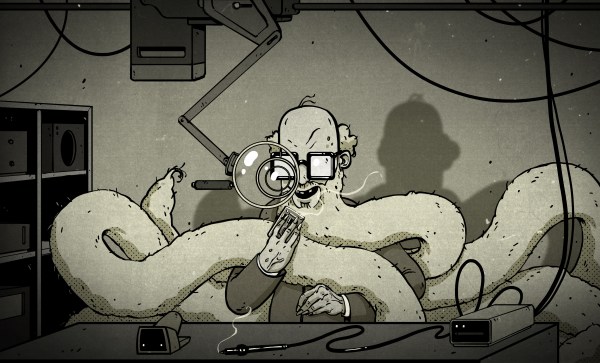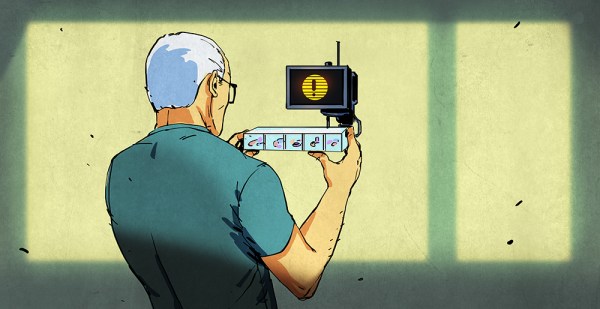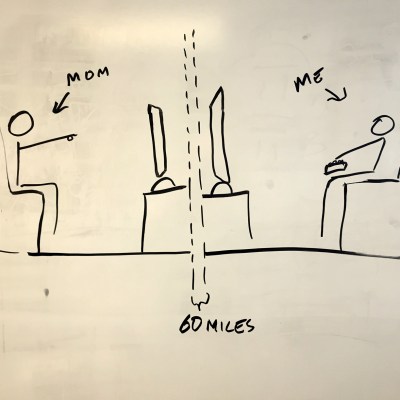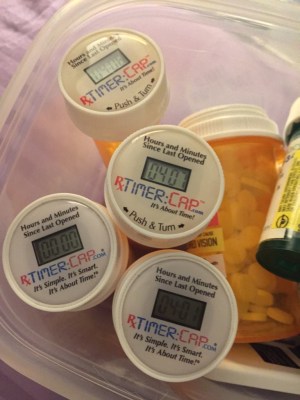[Jim]’s aunt has lived in the same house for the last 50 years. She loves it there, and she wants to stay as long as possible. There’s a big problem, though. The house has several staircases, and they are all beginning to disagree with her. Enter Staircane, [Jim]’s elegant solution that adds extendable legs to any standard walker.
Most of the time, walkers serve their purpose quite well. But once you encounter uneven ground or a staircase, they show their limitations. The idea behind Staircane is a simple one: quickly extend the back or front legs of a walker depending on the situation, and do so in unison. Staircane uses one button for each set of legs. Pushing the button engages a thin cable, much like the brake cable on a bicycle. The cable pulls a release trigger, unlocking the notched extensions. When the legs are sufficiently extended, the user simply releases the button to lock them in place. Once on flat ground, the user pushes the button again while pressing down on the walker to even out the leg lengths. Check out the video after the break to see the 3D-printed prototype.
Staircane is a semi-finalist in our Wheels, Wings, and Walkers challenge, which ended a few weeks ago. Did you know that you can enter your project into more than one challenge? Since this project falls squarely into assistive technologies territory, we hope that [Jim] and his team submit Staircane to our Assistive Technologies challenge before the deadline on September 4th. We don’t have many entries so far, so if you’re thinking about entering, give in to temptation!
Continue reading “Hackaday Prize Entry: Staircane, A Walker That Takes The Stairs”





 Watching out for each other is complicated by distance. We saw a few entries that try to alleviate that, like the
Watching out for each other is complicated by distance. We saw a few entries that try to alleviate that, like the  Continuing on the note of simplified communications is
Continuing on the note of simplified communications is 








 The easiest examples I can think of relate to medicine. A lot of the time people can be independent and high-functioning as long as they take the right medicine at the right time. The simplest way to ensure this is to use technology that helps track medication schedules.
The easiest examples I can think of relate to medicine. A lot of the time people can be independent and high-functioning as long as they take the right medicine at the right time. The simplest way to ensure this is to use technology that helps track medication schedules. 









